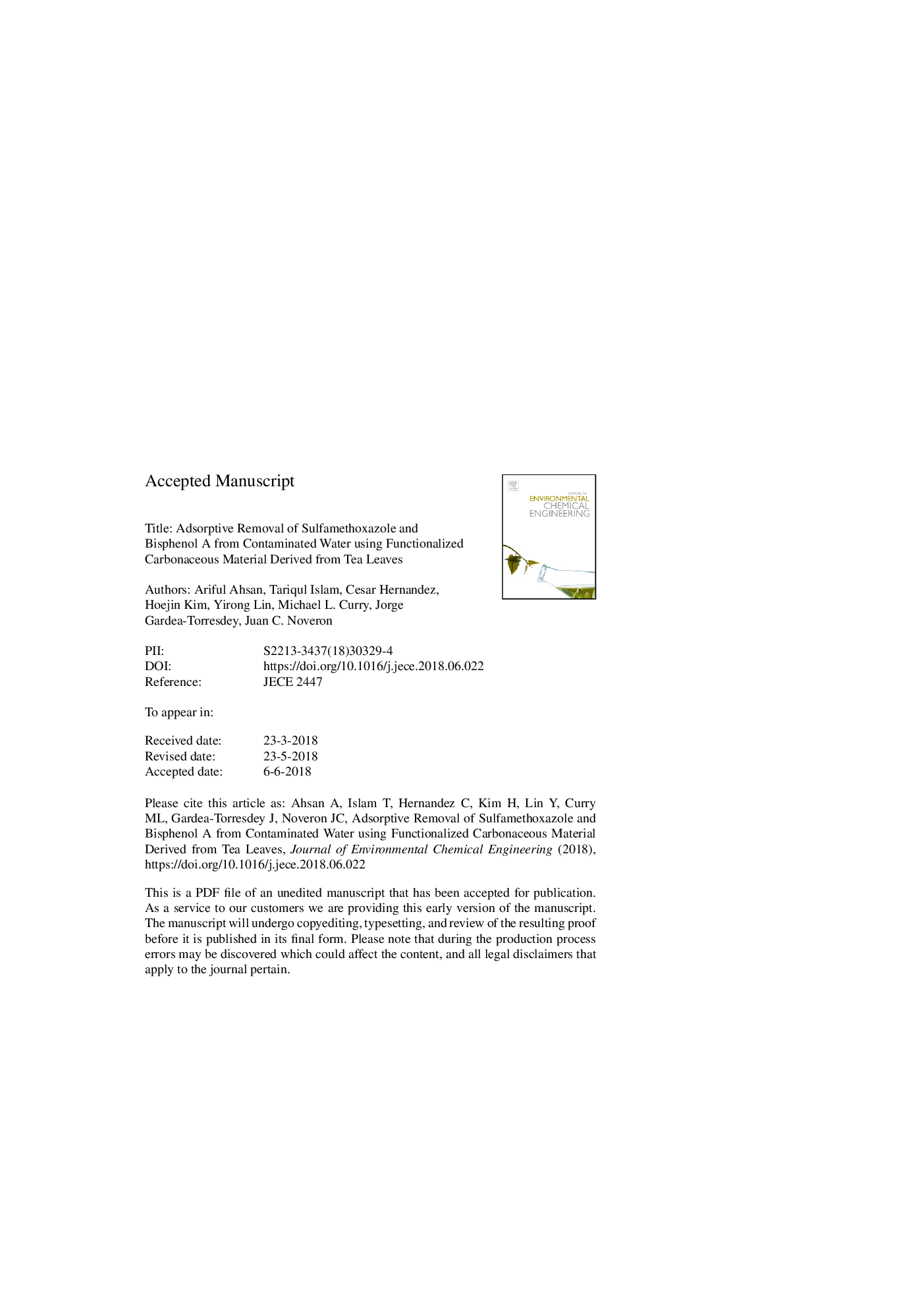| کد مقاله | کد نشریه | سال انتشار | مقاله انگلیسی | نسخه تمام متن |
|---|---|---|---|---|
| 6663871 | 1427040 | 2018 | 38 صفحه PDF | دانلود رایگان |
عنوان انگلیسی مقاله ISI
Adsorptive Removal of Sulfamethoxazole and Bisphenol A from Contaminated Water using Functionalized Carbonaceous Material Derived from Tea Leaves
دانلود مقاله + سفارش ترجمه
دانلود مقاله ISI انگلیسی
رایگان برای ایرانیان
کلمات کلیدی
موضوعات مرتبط
مهندسی و علوم پایه
مهندسی شیمی
مهندسی شیمی (عمومی)
پیش نمایش صفحه اول مقاله

چکیده انگلیسی
In this study, we report a facile method for the preparation of sulfonic acid functionalized carbonaceous adsorbent (TW-SO3H) from tea leaves. The adsorbent was characterized using Fourier-transform Infrared Spectroscopy (FTIR), Scanning Electron Microscopy (SEM), Energy-dispersive X-ray Spectroscopy (EDS), Thermogravimetric analysis (TGA), Raman Spectroscopy and Zeta potential measurements. The adsorbent was utilized for the adsorptive removal of antibiotics such as sulfamethoxazole (SMX) and endocrine disrupting chemicals such as bisphenol A (BPA) from water. The calculated adsorption capacities of TW-SO3H were 258.87â¯mg/g and 236.80â¯mg/g towards the removal of SMX and BPA, respectively at 25â¯Â°C. The new adsorbent has the ability to form electrostatic interaction and Ï-Ï stacking that allow the efficient adsorption of SMX and BPA. The Langmuir and Temkin isotherm models best fit the experimental data for the BPA and SMX adsorption processes, respectively. The results of the kinetic studies showed that the removal of SMX and BPA by TW-SO3H followed pseudo-second order kinetic model. A thermodynamic study indicated that the adsorption process was spontaneous as well as exothermic. The adsorbent was facilely regenerated and recycled for three cycles with a nominal loss of adsorption capacity. Our results indicated that TW-SO3H could be utilized as a promising adsorbent for the rapid removal of SMX and BPA from the contaminated water.
ناشر
Database: Elsevier - ScienceDirect (ساینس دایرکت)
Journal: Journal of Environmental Chemical Engineering - Volume 6, Issue 4, August 2018, Pages 4215-4225
Journal: Journal of Environmental Chemical Engineering - Volume 6, Issue 4, August 2018, Pages 4215-4225
نویسندگان
Md Ariful Ahsan, Md Tariqul Islam, Cesar Hernandez, Hoejin Kim, Yirong Lin, Michael L. Curry, Jorge Gardea-Torresdey, Juan C. Noveron,